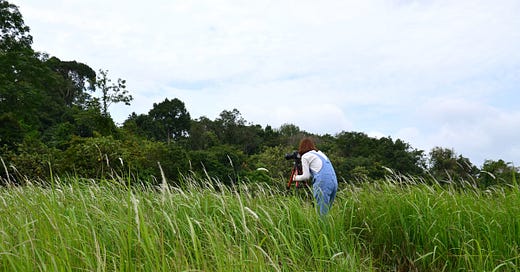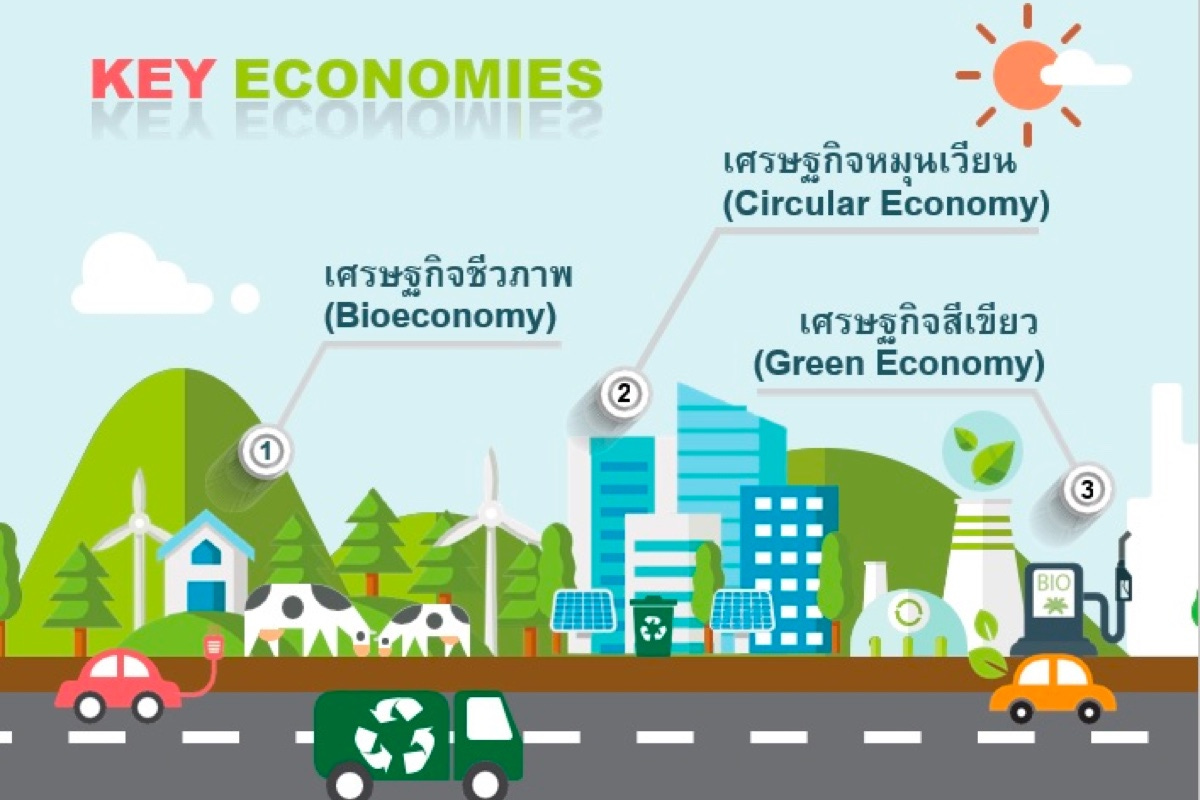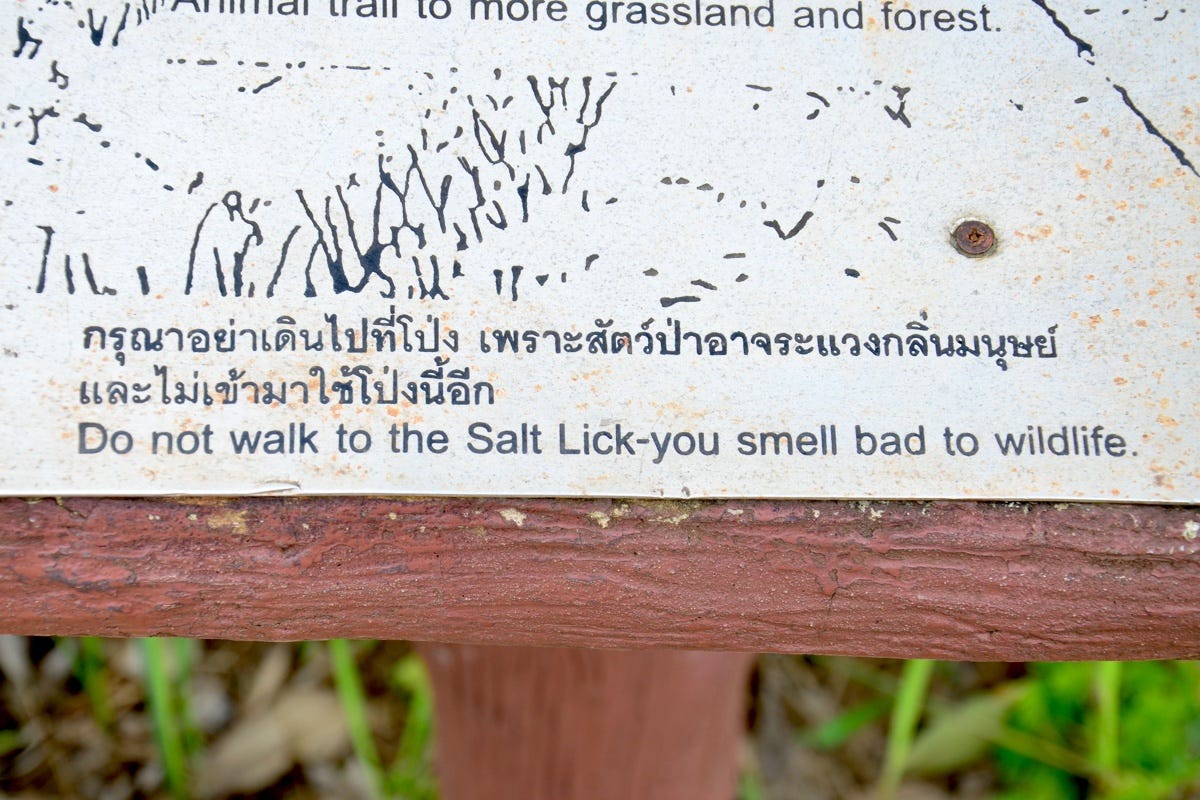Is there a better time to introduce a tourism tax than as you’re staggering out of a once-in-a-lifetime Covid-induced hiatus? Those at the Tourism Authority of Thailand brains-trust think the answer is no.
Yesterday the Bangkok Post covered their latest initiative here, which involves increasing the already approved 300 baht tourist tax to 500 baht. If you haven’t read the story already, go read it, I’ll wait.
Tourist taxes are far from a new thing. Plenty of nations have departure and arrival taxes, though these are mostly buried in air ticket prices nowadays. There are visa fees. You could argue a passport fee is a departure tax. After all a replacement Australian passport sets me back A$436—add another $220 if I’d like priority processing. And hell I’m already out of the country! Some towns, like Penang, have room taxes. Then there’s the good ole double pricing of national parks and other attractions.
Budget-traveller spotted in the wild. Khao Yai National Park. Photo: David Luekens.
So what gives with the 500 baht (roughly US$15) tourist tax? I’ll let Yuthasak Supasorn, the TAT governor explain. The Bangkok Post has him explaining the point of the extra 200 baht as follows:
“... the additional 200 baht will be earmarked for: projects initiated by the private sector, community enterprises, or social enterprises that would like to transform their business to meet the fund’s strategy; helping the country restructure from mass tourism to high-value or a bio-, circular and green economic model; and environmentally concerned tourism.”
When he refers to the “fund’s strategy,” what he is talking about is the approval, last week, by the Centre for Economic Situation Administration (a talk-shop established and chaired by coupist Prayut), of the creation of a fund. The goal of the fund is to subsidise projects which will:
“...transform the industry, focusing on high-value and sustainable tourism.”
By “high value,” the CESA means “high spending.” They don’t make it clear how they are drawing a line between people spending loads of dosh and sustainability. This is something I’ve written about repeatedly over the past.
Let’s get some quality tourists in here. Near Khao Yai National Park. Photo: David Luekens.
Rather than getting bogged down in those weeds again, I want to highlight what the Governor wants to transform the tourism economy into. He does, after all, give a few more details than the CESA. The TAT wants to restructure its mass tourism industry into:
“...a high-value or a bio-, circular and green economic model; and environmentally concerned tourism.”
I had no idea what he meant by a bio-economic model, nor a circular economic model, so I Googled the terms—wouldn’t want to miss a chance to learn something new—and I found this fantastic page on the website of the Royal Thai Embassy in Washington DC.
The Thailand I know and love. Source: Thai Business News via Thai Embassy Washington.
It seems Mr Yuthasak miss-spoke (or was miss-quoted) slightly. What he meant was a “Bio-Circular-Green Economic Model”, better known as the BCG. Not to be confused with the BFG—a kids’ book by Roald Dahl.
This scheme has been put together by (I assume) the Thai research community and is “a new economic model for inclusive and sustainable growth”. It reads like one of my uni readings (ie like stereo instructions) but to boil it down, it highlights four industries. They are agriculture and food, medical and wellness, bioenergy, biomaterial and biochemical, and tourism and the creative economy. I’m going to ignore the first three as I want to keep this post under 12,000 words and concentrate on the last one. Tourism and the creative economy.
No doubt Pak Chong Night Market gets a tonne of high-value tourists. Photo: David Luekens.
There are plenty of smart points listed.
They suggest having a policy of promoting secondary cities—which could better disperse tourists. Science and technology will be used to define national guidelines, looking at issues like carrying capacity. It will also be used to help rehabilitate the environment. It will also support a sustainable tourism standard system—while this isn’t said, I’m going to reach and suggest they’re talking about community-based tourism. The creative economy concept will then be used to interlink different strands of tourism—wellness tourism, culinary tourism, eco-tourism, cultural tourism and sports tourism. I don’t know quite how you interlink something that is already interlinked, but whatever.
The one clanger is that technology and innovation will be applied to create and upgrade infrastructure and a digital platform to improve tourists’ convenience and experience and advance the industry to high-quality tourism. Because yes, exactly what Thailand needs is yet another digital tourism platform that nobody looks at or uses.
And they were doing so well.
TAT to backpackers. Khao Yai National Park. Photo: David Luekens.
Let’s revisit those BCG points which I suggested were smart:
Promotion of secondary cities
Visiting lesser-visited places
Participating in environmental activities
Enthusiasm for community-based tourism
Having an interest in wellness, culinary, eco-, cultural and sports tourism
If you’re a Travelfish reader, chances are you’re probably thinking “hey, they all sound kind of familiar—that is how I already travel.”
Nevertheless, budget travellers are exactly what the TAT does not want. When asked about yet another charge having an impact on visitor numbers, Mr Yuthasak said:
“The additional cost won't have an impact on tourists as we want to focus on the quality market.”
The inference being if you’re wealthy you don’t care where your money goes. I don’t know many wealthy people, but those I do are wealthy in part because they care very much about exactly where their money goes. Whatever—it is a stupid and offensive statement. Not the first, and it will be far from the last.
“I think I spotted a creative economy concept.” Khao Yai National Park. Photo: Unknown but on David’s camera!
Idiocy aside, looking at that list above though, I hate to break it to the Governor, but there is one type of visitor to Thailand who, by and large, tick all these boxes already. Not only do they tick all those boxes, but they were (pre-Covid) already supporting this section of the Thai tourism economy—no 500 baht charge required.
Those people? They’re called budget travellers—dare I say, backpackers.
Couchfish is 100 per cent independent and reader-supported. If you’re not already a subscriber, and you’d like to show your support, become a paying subscriber today for just US$7 per month—you can find out more about Couchfish here—or simply share this story with a friend.
Don’t forget, you can find the free podcasts on Apple, Pocket Casts and Spotify as well as right here on Couchfish.



















Share this post